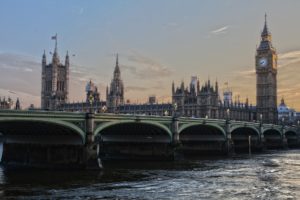On 19 March 2020, The Home Office introduced the new Fire Safety Bill, in an effort to improve fire safety in buildings in England and Wales. In September the Bill passed its first stage before becoming law, clearing the commons despite calls from politicians to make adjustments to ensure the recommendations of the Grenfell Tower inquiry’s first phase were implemented.
 Set to amend the Fire Safety Order 2005, the bill has been designed to “ensure that people feel safe in their homes, and a tragedy like the Grenfell Tower fire never happens again”.
Set to amend the Fire Safety Order 2005, the bill has been designed to “ensure that people feel safe in their homes, and a tragedy like the Grenfell Tower fire never happens again”.
The Home Office has set out clarification to who is accountable for reducing the risk of fires – the duty-holder/building owner for multi-occupied, residential buildings. They must manage the risk of fire for:
- The structure and external walls of the building (e.g. cladding, balconies and windows);
- Entrance doors to individual flats that open into communal areas.
The Fire Safety Bill is also designed to provide a foundation for secondary legislation, based upon the recommendations made from the Grenfell Tower Inquiry. Extra measures may include responsibility for lift inspections, the reviewing of evacuation plans and fire safety instructions to residents.
Chair of the National Fire Chiefs Council Roy Wilsher, who also chaired this year’s Tall Buildings Fire Safety Conference in October, said: “I am pleased to see the announcement of the new Fire Safety Bill. We have been calling for additional powers since 2017 and these changes should contribute to the public feeling safer in their homes.
“We look forward to seeing additional supportive measures to assist fire and rescue services, identify different types of cladding and take appropriate measures.”
In May, the bill received its second reading in parliament. James Brokenshire, Minister of State for Security, noted that the Government was “resolute in its commitment to ensure that Grenfell is never repeated,” and that the expertise of fire risk assessors would be required to comply with the bill, which will apply to all multi-occupied residential buildings.
In September, an amendment to the bill was tabled by the Labour Party, who wanted to see the recommendations from Sir Martin Moore-Bick’s phase one Grenfell inquiry report put into law. The amendments were voted down in the House of Commons by 309 votes to 185, with Felicity Buchan, representing the Kensington constituency (home to the Grenfell Tower), among those who voted against the changes. Conservatives argued that it would delay the implementation of the bill. Supporters of the amendments accused ministers of a “shameful U-turn”, while Grenfell United said that it was “outraged” at the results.
A government spokesperson said: “We are doing everything in our power to implement the phase one recommendations of the Grenfell Inquiry in the most practical, proportionate and effective way to ensure such a tragedy can never happen again. Our proposals go further than the inquiry’s recommendations in many ways, such as inspection requirements on equipment, on information for residents and on external walls. We are now seeking the views of those most affected by the inquiry before deciding on our final approach.”
The Fire Safety Bill held its report stage in the House of Lords for additional debate on Tuesday 17 November. A range of topics were discussed, with the House asking the Government to “think again on the building owner and manager duties, public registers of fire risk assessments and prevention of remediation costs being passed from freeholders to tenants”. The three votes on proposed amendments to the bill included:
- Amendment to place various duties on owners and managers of buildings containing two or more domestic premises – advised that the recommendations made in the Grenfell Tower Inquiry Phase 1 Report are implemented;
- Enable prospective and current renters, leaseholders and owners to check the fire safety status of their home by accessing a public register;
- Preventing freeholders passing on remediation costs to leaseholders and tenants through demands for one-off payments or increases in service charges.
Follow the latest on the Fire Safety Bill.
Alongside the bill, the Government has highlighted a number of other measures it is taking to improve building and fire safety:
This article was originally published on IFSEC Global.
Fire Safety in 2023 eBook
SHP's sister site, IFSEC Insider has released its annual Fire Safety Report for 2023, keeping you up to date with the biggest news and prosecution stories from around the industry.
Chapters include important updates such as the Fire Safety (England) Regulations 2022 and an overview of the new British Standard for the digital management of fire safety information.
Plus, explore the growing risks of lithium-ion battery fires and hear from experts in disability evacuation and social housing.

 Set to amend the Fire Safety Order 2005, the bill has been designed to “ensure that people feel safe in their homes, and a tragedy like the
Set to amend the Fire Safety Order 2005, the bill has been designed to “ensure that people feel safe in their homes, and a tragedy like the 